Ladakh, on a high plateau in northern India, is a big adventure for families with older children. It’s hard to reach for much of the year but in the summer the weather’s warm and sunny and there’s a window of opportunity for holidaymakers and adventurers.
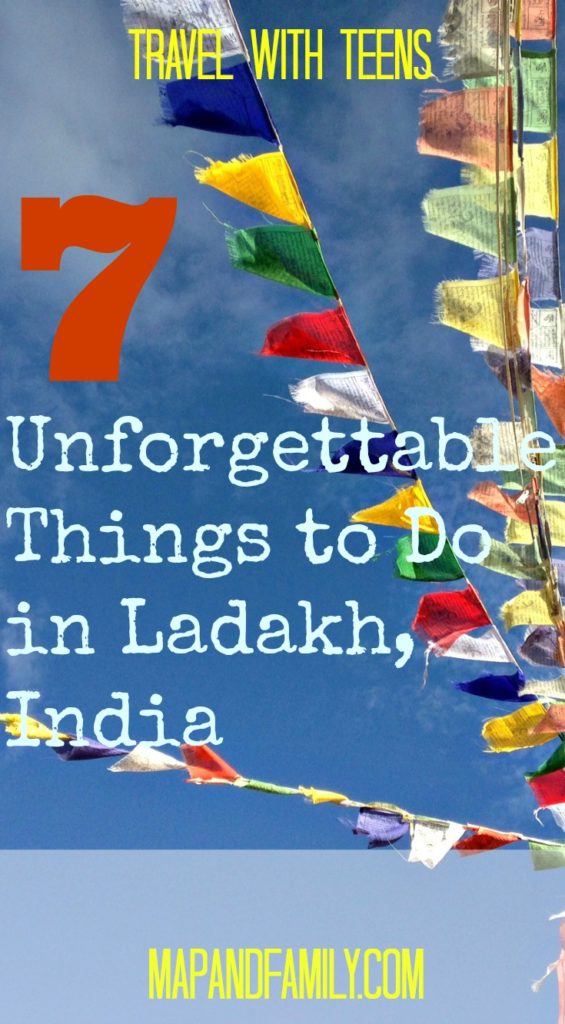
PIN THIS
- High altitude Himalayan scenery
- Walking, hiking, white water rafting
- India with Tibetan Buddhist influences
- Ancient monasteries
- Traditional village life
Who went Fiona, Christopher, Ellie 15 and Will 12 travelled there in July 2015
How to get there Fiona: Scott Dunn arranged the whole trip for us and were excellent. We flew from London Heathrow to Delhi which takes around 8 hours. The next day we took an early morning flight to Leh.
Why Ladakh? Fiona: Christopher visited Tibet years ago and loved it. The landscape and climate of Ladakh are similar and because it’s heavily influenced by Tibetan Buddhism it’s often called ‘Little Tibet’. It’s easier to access than Tibet though and visitors are welcome in the summer months.
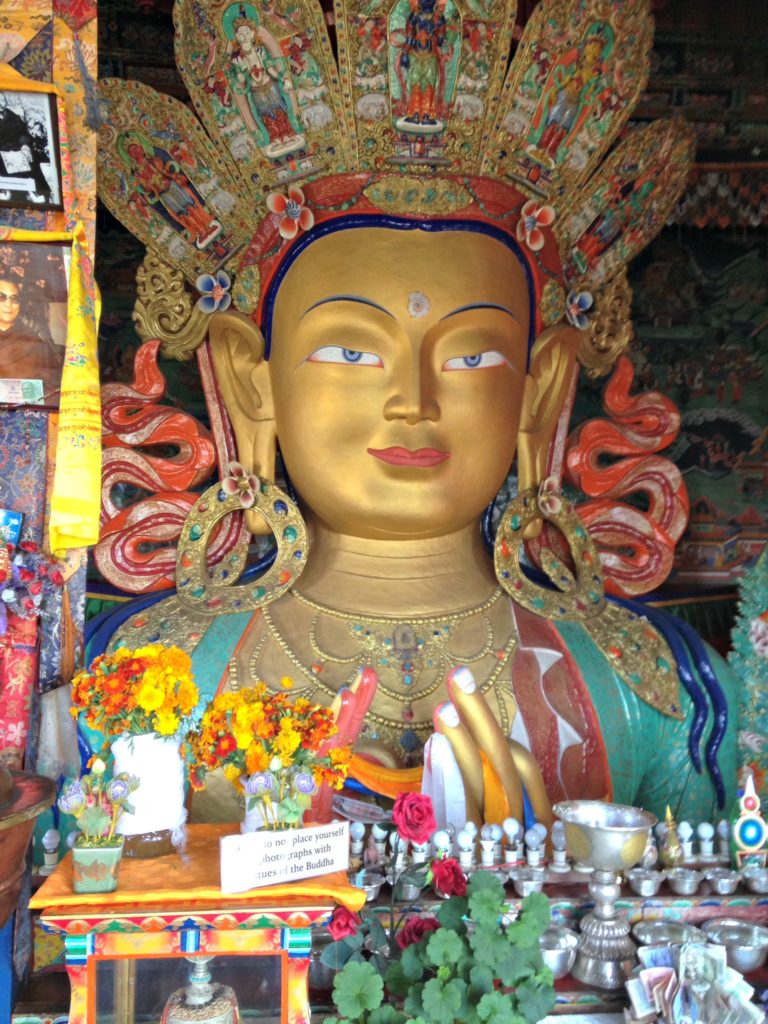
Best Time to Visit Ladakh
For families the best time to visit Ladakh coincides conveniently with school summer holidays. From June to September the weather is warm and sunny and the high passes are open. In winter the climate is harsh and temperatures drop below freezing.
7 Things to do in Ladakh on a Family Trip
Stopover in Delhi
Fiona: We flew overnight and landed in Delhi in monsoon weather and rush hour traffic. A minibus was waiting to take us to the lovely colonial-style Imperial hotel. But as we drove through crowded streets with street vendors in the middle of the road and cows wandering across lanes of traffic we felt stunned and tired.
We had lunch and collapsed onto our beds but soon decided we should make the most of our afternoon in Delhi. We walked out of the hotel with borrowed umbrellas and hired a tuk-tuk to escape the driving rain and get through the crowds of an anti-government protest in the central district. The driver took us to a covered shopping area where we stepped into the first shop, a carpet shop, out of the rain.
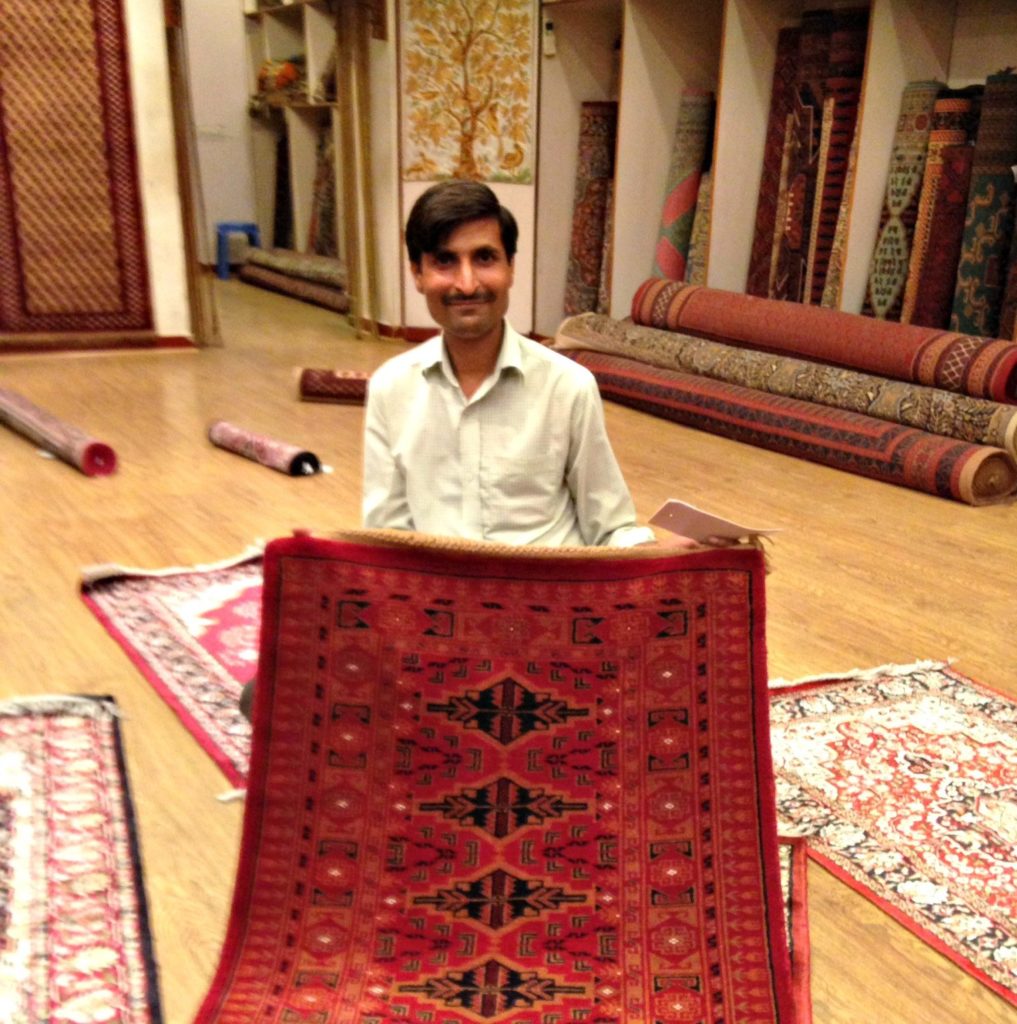
We didn’t want a carpet but we were grateful for the tea and biscuits we were offered. We saw lots of beautiful carpets and, inevitably, we bought one as well as lovely pashminas. The tuk-tuk driver, who had clearly spotted we were new to Delhi, had waited outside for us. He then thought it would be a good idea to let Will take over the controls for a short while (chaos ensued!) The traffic was absolutely crazy with numerous lanes and drivers drifting in and out, beeping all the time and we were pleased to get back to the sanctuary of our hotel.
Experience Life in Thin Air

Fiona: The next morning we got a 6.15 am flight up to Leh, literally ‘up’ as it’s 3500 metres above sea level and the plane crosses high mountain passes.
Will: Dad and Mum had to sit down in Arrivals!
Fiona: There were a few people feeling weird in the airport! The high altitude can be a problem and some people can suffer from acute mountain sickness or AMS. The guide advised us to stay still and chill for 24 hours and to drink lots of water. The children were ok but I got an awful headache and felt very sick. Once we arrived at our house the guide brought out the oxygen tanks that are kept there. He then went on to tell us cautionary tales about tourists who drank too much on their first night in Ladakh before they’d acclimatised to the altitude!

Leh is a community geared up for summer backpackers: it has lots of travellers’ supply stores and we even passed an oxygen bar on the roadside. Our route from Leh was peppered with road signs that take a novel approach to road safety education: our favourites were ‘Drinking Whisky? Driving Risky!’ and ‘Better to be Mr Late than late Mr’!
Stay in a Village House
Fiona: We stayed in three different Shakti village houses across Ladakh. They were all simple traditional homes renovated for tourists with comfortable beds, fluffy pillows and western-style bathrooms. Normal village life unfolds around them every day so it feels like an authentic Himalayan experience. In the villages we saw hardly any other tourists and none of the trappings of a tourist industry like restaurants, cafes or souvenir shops. Our first house was in Nimoo about an hour’s drive from Leh.
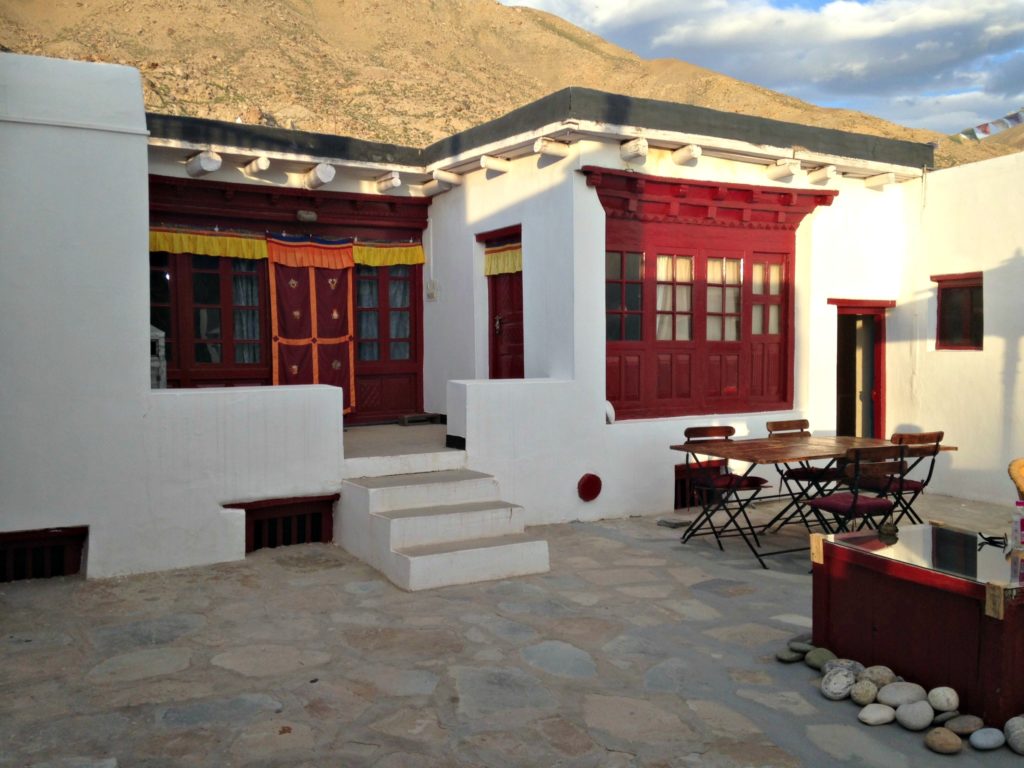
As we were acclimatising to the altitude we did chill on the roof terrace, reading books, playing rummy, drinking tea and absorbing the amazing scenery. We watched the local farmers bringing in the summer hay and laying it on the neighbouring rooftops to dry.

We explored the village too. It’s a lush, fertile area and we walked through apricot, walnut and apple orchards.
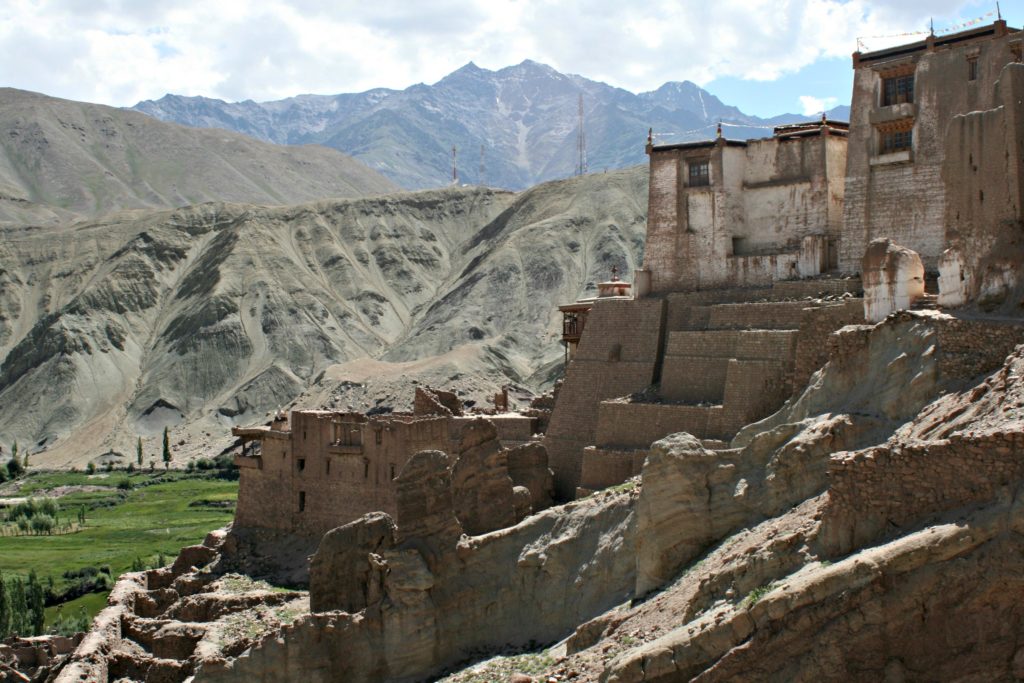
The second house we stayed in was a carpenter’s house high up in Likhir. It had amazing views of the valley and snow-capped mountains and beautiful willow weaving in the rooms.

Finally we moved to a house in Stok where there is also a Tibetan style palace, home to Ladakh’s royal family, and the famous Thikse monastery.
The kitchens in the houses were quite old-fashioned by western standards. But we ate fabulous meals each night. We enjoyed lots of traditional Himalayan dishes: curries, vegetable dishes and lovely Indian breads. For snacks there were plain but delicious home-cooked biscuits with lemon and ginger tea. Our guide offered us the local salty butter tea one day but it’s an acquired taste!
We were usually out walking at lunchtimes so our guide arranged picnics for us. These were always served beautifully. We ate on fully laid tables in meadows or orchards, seemingly in the middle of nowhere.
Visit Monasteries
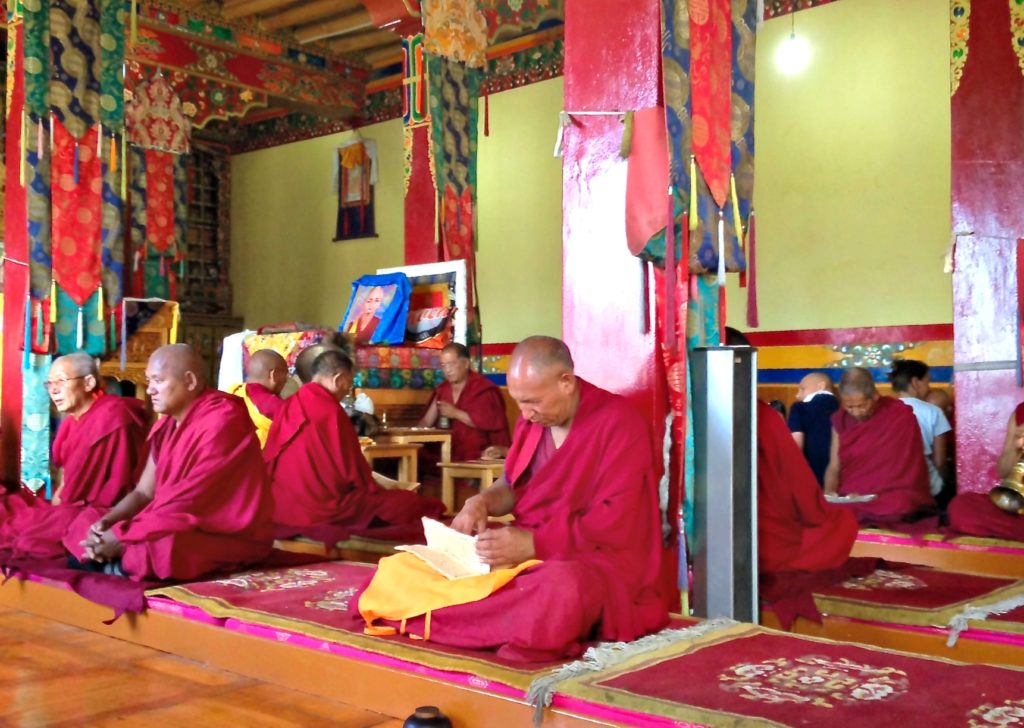
Fiona: We learnt a lot about Buddhism during our stay. One morning we went to very early prayers at a monastery close to our house and visited a school for monks.

At Stok we drove to Thikse monastery, one of the largest in Ladakh, built on twelve levels on a hillside and home to the Yellow Hat Buddhist sect.
We learnt about prayer wheels, stupas and the colourful prayer flags strung around the landscape and villages which represent peace, compassion, strength and wisdom.
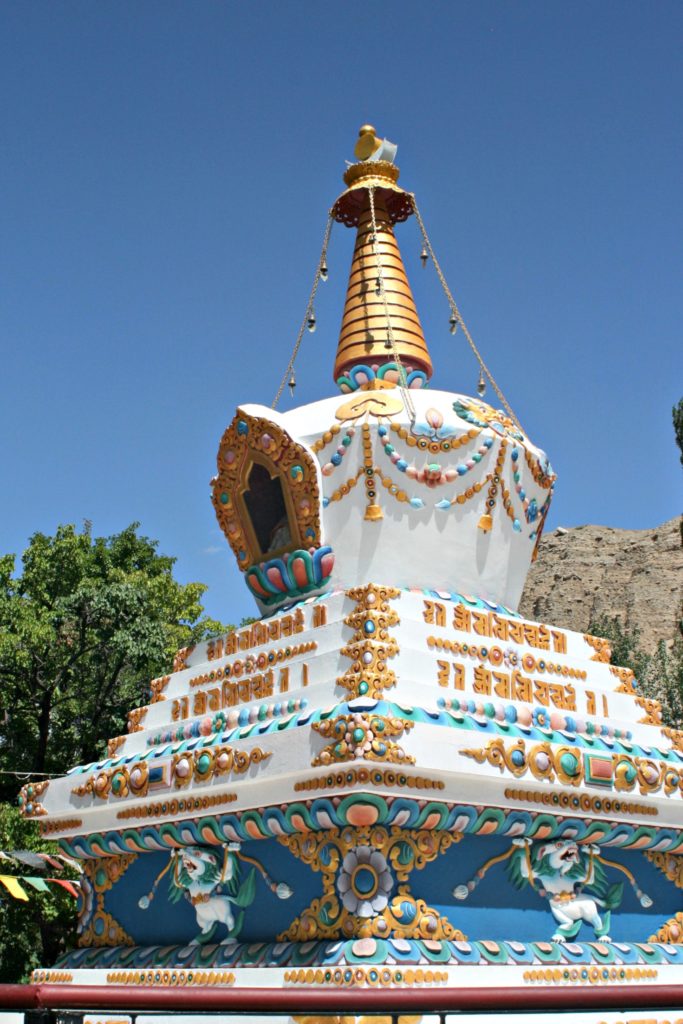
One evening a monk came to have tea with us. He spoke perfect English and was very interested in Western culture and politics. He considered it a great gift to have grown up as a monk as it had given him an education.
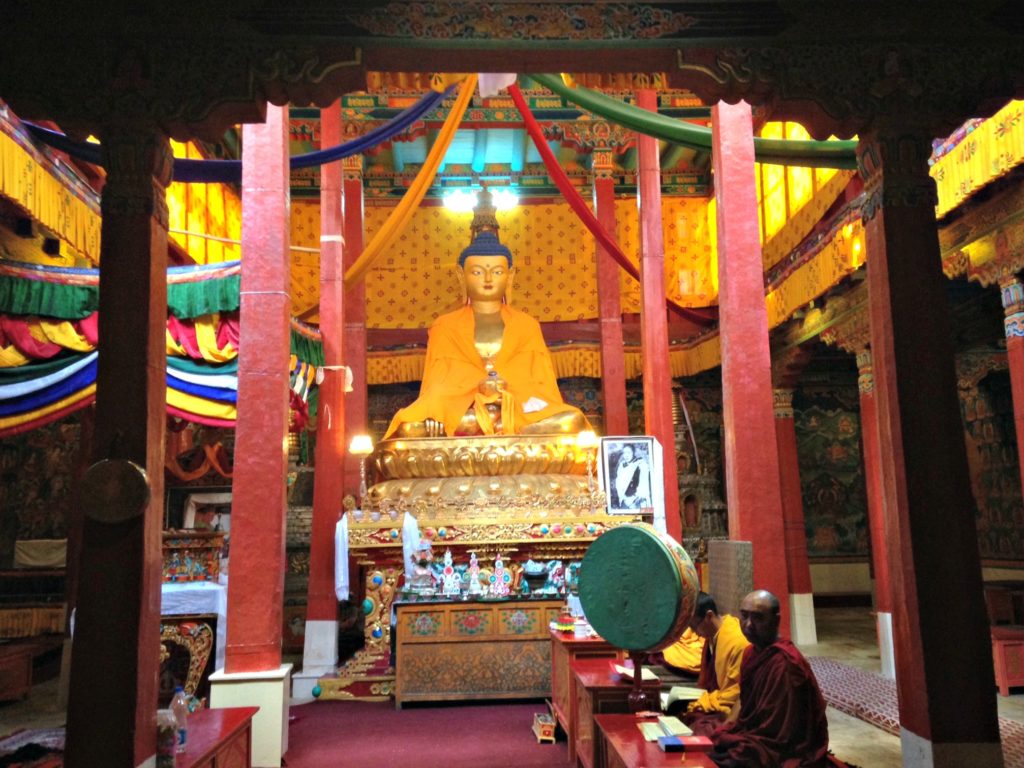
Hike in the Mountains
Fiona: We did lots of local exploring and village walks as well as two proper hikes with our guide. The first was along the Indus river and the second a full day’s trek in the mountains to Stok Kangri which is the highest mountain in Ladakh.
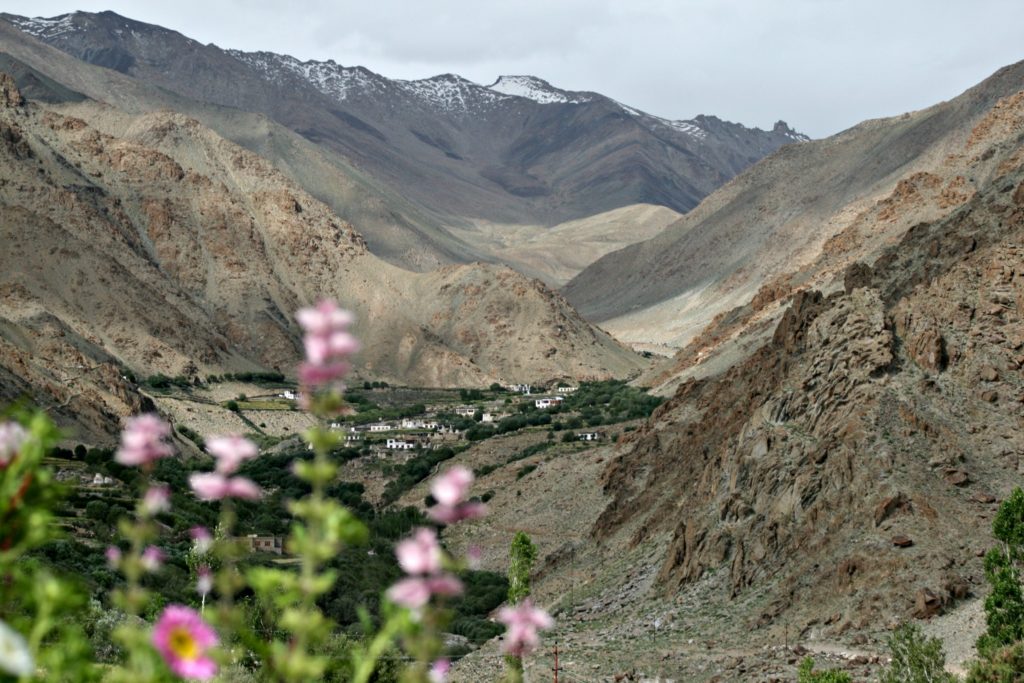 The air feels thin and we all noticed that it was harder to walk in the high altitude. Our lips cracked and we applied lots of sunscreen because it’s very easy to burn. But it’s worth it because the Himalayan views are spectacular with blue blue skies and snow-capped mountains.
The air feels thin and we all noticed that it was harder to walk in the high altitude. Our lips cracked and we applied lots of sunscreen because it’s very easy to burn. But it’s worth it because the Himalayan views are spectacular with blue blue skies and snow-capped mountains.
Go White-water Rafting
Fiona: Our guide took us on some sort of adventure every day and one of these was white-water rafting down the Indus. The rafting guide gave us a safety briefing and instruction and accompanied us on the trip which lasted about an hour and a half. It was quite gentle in the main although we hit some stronger rapids which threw us upwards but we all managed to stay in the boat. We felt quite safe even though we hadn’t done much rafting before.
Consult an Oracle
Fiona: Oracles are big in Tibetan Buddhist culture and the Dalai Lama is said to consult them regularly. On one of our last afternoons our guide asked if we’d like to meet one.
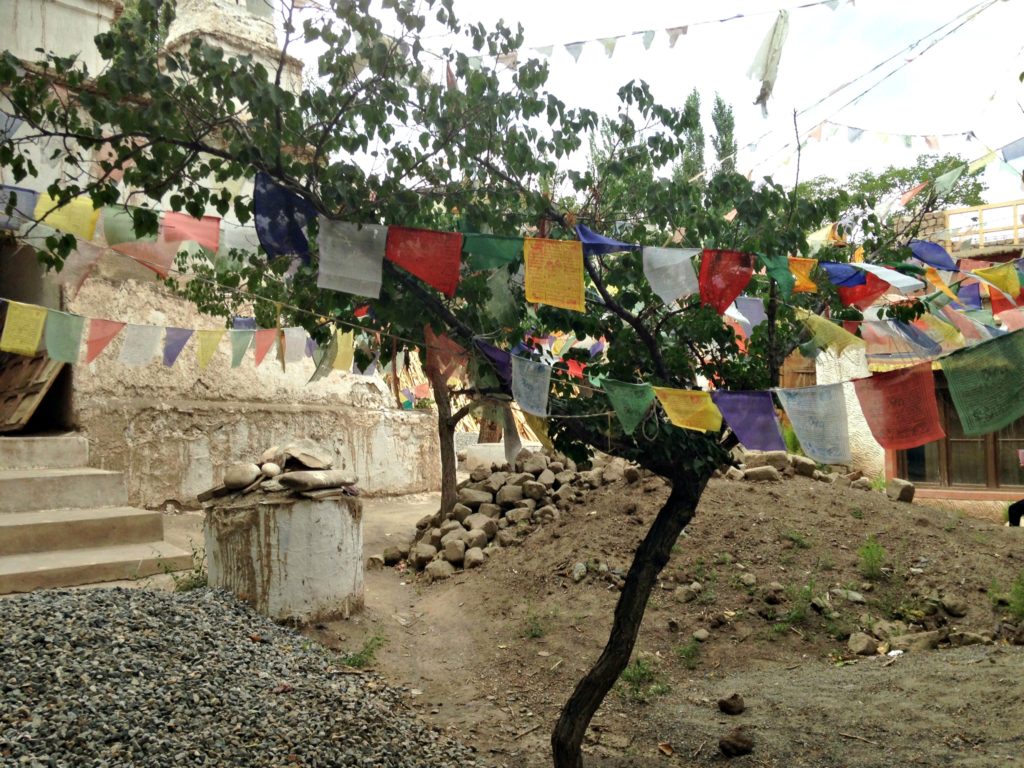
We drove to a village and waited in the empty front room of a very small house whilst the guide spoke to a woman there in Ladakhi. She lit incense sticks then went outside where we could hear her making strange gurgling noises. When she came back in she seemed to be in a trance and chanting in Tibetan. Our guide translated this for us and told us she was ready to take questions.
We’d worked out some ‘safe’ questions and Christopher started by asking how to have a calmer life. The oracle was dismissive: ‘Do less,’ she said. Then I told her I was thinking of returning to work and asked if it was a good time to do so. She was much more interested in this and talked to us about balancing work and family needs.
I was in two minds about this visit. An oracle is said to be possessed by spirits who enable her to make prophesies or heal illness. I felt a bit uncomfortable as an outsider and also about exposing the children to a potentially unnerving encounter.
Will: It was a bit of a surreal experience. Looking back it seems like an odd thing to have done. It was very interesting though as it plays an important role in the lives of many Ladakhis. It really opened our eyes to a new culture.
Best Moments and Worst Moments?
Will’s best moment: We found some amazing things to photograph when we were hiking up into the mountains that rose out of the plateau.

Donkeys trod the paths ahead of us carrying supplies up to a nearby base camp and at the top we met an old lady tending donkeys that were grazing the nearby pasture.
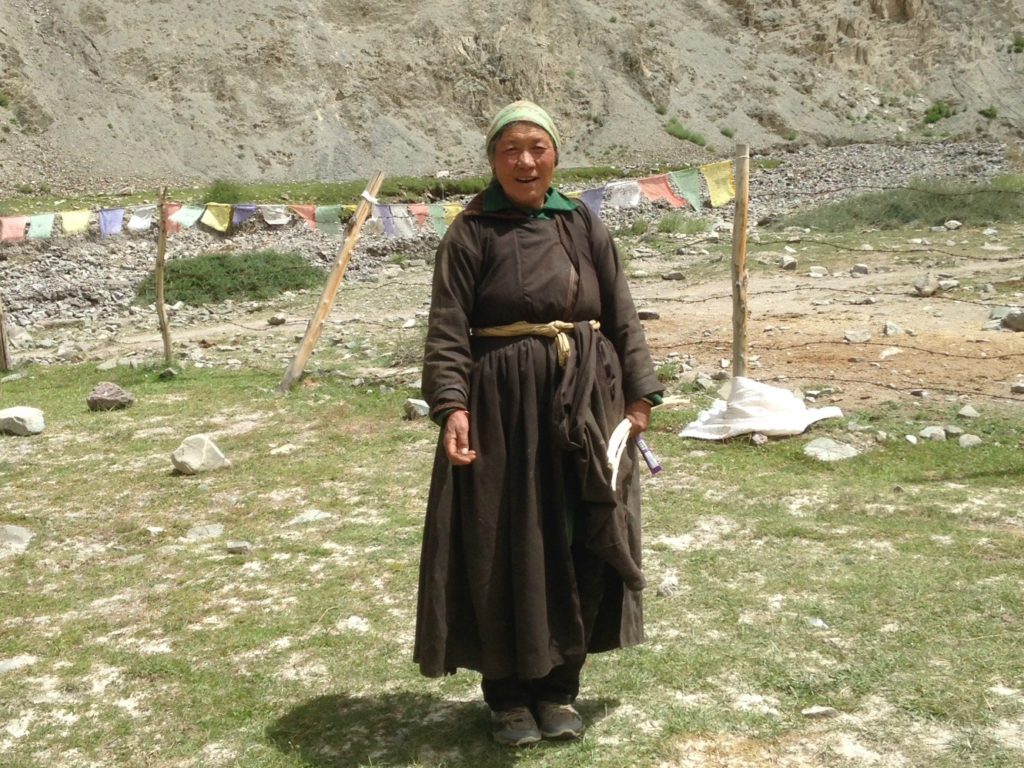
Fiona: There’s a point when you have a terrible headache and an oxygen tank beside your bed and wonder whether the whole experience has stopped being a holiday? But we did all acclimatise to the altitude after a day or two.
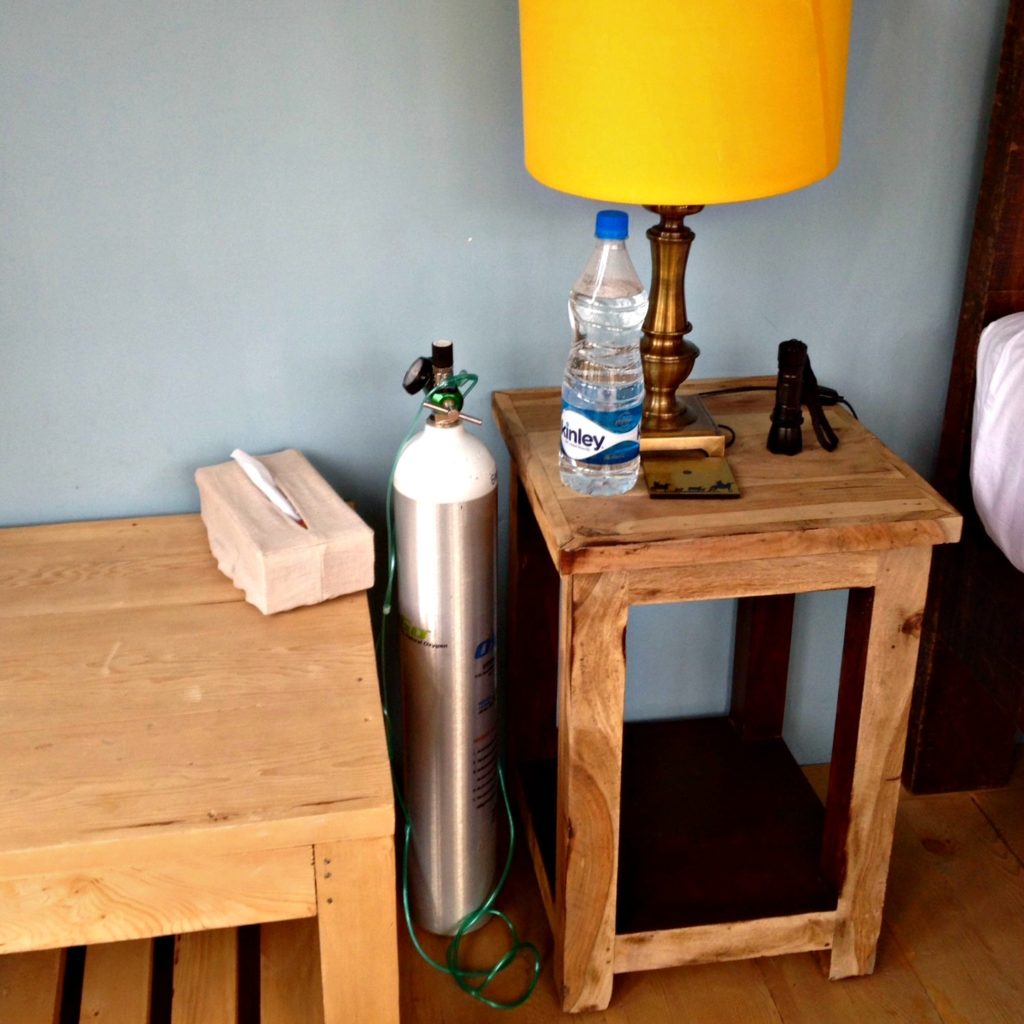
Everybody got a bit of a funny tummy but I’d packed Imodium. At one particular tea-drinking stop I thought it would be a good idea to avoid the tea altogether and signalled surreptitiously to Will and Ellie but they promptly passed their cups to Christopher to drink!
Finally we visited monasteries everyday, six or seven in the week. It was very interesting to begin with but on reflection this was probably too many. They did all look a bit similar in the end!

My best moments were taking in the beautiful scenery and the amazing stillness. The prayer flags strung across clear blue skies are images that will stay with us for a long time.
PIN this to Pinterest to save and share the story!

Ladakh Family Trip
Fiona and family’s trip was organised by Scott Dunn. Click here for their website.
From Leh they flew back to Delhi and then on to Sri Lanka for the second week of a two-centre holiday
All photos by Fiona and family are all rights reserved. Photos may not be reproduced without prior written permission.
Have you visited Ladakh? Please share your stories in the comments!
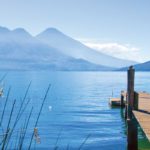



Leave a Reply